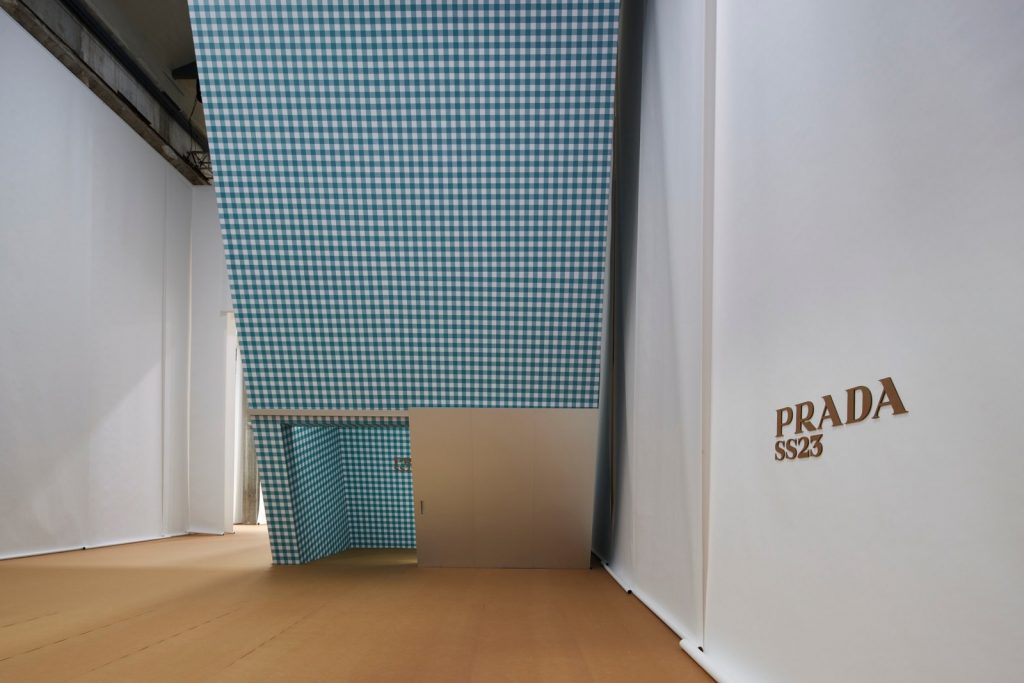
Architect Rem Koolhaas Designed an Enormous Paper House for Prada’s Latest Runway Show
When guests took their seats for the Spring 23 Prada runway show on Sunday, they found that they were sitting on chairs made of sturdy cardboard planks. The seating was arranged inside a mock house, with oversized doors and window cutouts throughout, and enormous white sheets of paper hanging from the ceiling. The floors, brown and smoothly textured, seemed destined for the recycling bin. The whole thing looked like an architect’s model blown up to monumental size.
The set was the latest collaboration between Prada and Rem Koolhaas, the 77-year-old Dutch architect. Since 2004, Koolhaas has masterminded the conceptually rich spaces in which Miuccia Prada shows her work, an intriguing partnership between two of the most influential designers in their respective fields. Mrs. Prada is an intellectual whose collections invite loving contemplation, and Koolhaas, who has designed famous buildings like the CCTV Headquarters in Beijing, intends for his spaces to do the same. Over the course of his 18-year partnership with Mrs. Prada, whom he met in 1999 when she asked him to redesign her stores, Koolhaas and his firm OMA have applied rigorous creativity to the runway. Together, they have: created modular and dispersed seating arrangements to question the front row pecking order; projected fake advertisements behind the catwalk; and created some of the COVID era’s most immersive and surprising video-show sets.
Courtesy of Prada
A week before the show, Koolhaas, along with OMA project architect Giulio Margheri, allowed GQ a rare peek into their creative process—which, as they described, essentially runs in parallel with Mrs. Prada’s (and now Raf Simons’s) own. Before Koolhaas and Margheri began working on the Spring 23 space, they were told that the themes of the season were “naivety, childhood and simplicity,” as Margheri put it in a Zoom call. Which is how they found their way to paper, the duo explained in a follow-up email: “Paper is a simple material, but it enables us to articulate an intention; it is the basic surface onto which we express our ideas. In this project we wanted to explore its qualities as an architectural element, almost like children would give shape to their imagination.”
Like Mrs. Prada, Koolhaas sees his creative practice as intimately connected to politics and social movements. The use of humble and 100% recyclable materials this season, he said, grew out of a “particular kind of resistance to luxury.” Which might seem ironic, considering the models strode out wearing trim wool suiting and tiny leather shorts which will retail for many thousands of dollars. But Koolhaas isn’t in the business of selling clothes; he’s in the business of, as he and Margheri put it, “conveying a mood, projecting a mentality.” They elaborated: “We’ve always shared with Prada a certain resistance to waste in the design of the show spaces…Now, more than ever in recent times, the idea of luxury finds itself at odds with the rising costs of fuel, food and construction materials. In a world where aggression is becoming increasingly present, we wanted to create a space that conveys softness and modesty.”